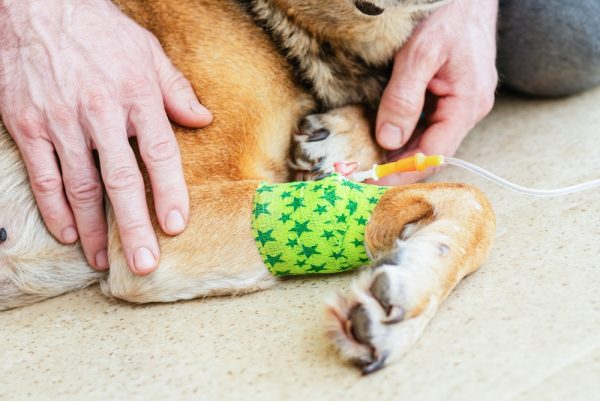In this article
Canines sometimes act strangely and seemingly without purpose, and you might have even heard a few facts or myths that made you question your understanding of them. For example, do dogs poop in line with the Earth’s magnetic field? The mere suggestion seems outlandish without a clear reason why it would benefit them. While we can tell you that, surprisingly, studies have found that canines prefer to defecate on a north-south axis, there’s a lot more to it. More research is needed to understand this behavior in better detail. Let’s see what the science says.

Do Dogs Poop Facing North?
Believe it or not, studies have found that, after watching 70 dogs defecate over 2 years (roughly 1,900 defecations and 5,600 urinations), dogs prefer to poop on the north-south axis while the magnetic field is under calm conditions. However, when the magnetic field is unstable, this behavior doesn’t occur. Some theorize that this might be why your dog sometimes can’t settle on a place to go potty.

Why Do Dogs Do This?
It’s still unclear as to why dogs align themselves this way. We don’t yet know whether they are doing it consciously (perhaps the magnetic field can be sensed by dogs), or whether they simply feel more or less comfortable when facing a specific direction. The study discussed above hypothesized that they might do this to orientate themselves in order to know where they are and where they are going.
Why Is This Important?
According to the researchers of the study, this is one of the first times that a predictable and measurable behavior has been recorded in reaction to the Earth’s magnetic field in mammals. This could mean that other scientists might need to “revise their former experiments and observations and consider the phenomenon in their current and future experiment.”
Magnetic Field and How It Affects Animals
The planet’s magnetic field provides all types of animals with information, most of which is used for navigation. Birds are the classic example, but research shows that this ability isn’t confined to birds.
One study observed north-south orientation in domestic cattle and Roe and Red Deer. The scientists noted that this orientation occurred while these animals were resting or grazing. They ruled out light and wind conditions as mitigating factors. They deducted the influence of the magnetic field as a real-life example of Occam’s razor, where the simplest explanation is probably true.
Another study by the same group determined that this alignment in cattle and deer was more significant in resting bovines than standing bovines. The animal’s position may provide additional clues about the purpose of this orientation. Evidence also exists in the canine world. Researchers observed magnetic alignment may improve the hunting success of red foxes when mousing or hunting for rodents. The scientists didn’t identify any confounders swaying the results.
Research with hunting dogs (domesticated breeds that have been bred to hunt) provides additional information about the purpose of directional or, specifically, north-south orientation. The scientists observed that when the dogs were navigating their way back to the place they started, they would first do a short run along the north-south geometric axis before embarking on their homeward journey. They concluded this run may help orient the hounds to use their homing abilities.
So far, we know that canines join coyotes, grey wolves, cattle, roe deer, red deer, red foxes, and hunting dogs when it comes to magnetoreception, which refers to an organism that detects the Earth’s magnetic field.


Final Thoughts
Dogs are creatures of habit. They likely prefer a set schedule of meals, walks, and play. They may also practice magnetic alignment, even if its purpose is uncertain. Canines have retained many behaviors that may not seem necessary in today’s world, and perhaps assuming a north-south position offers some benefits that science has yet to uncover.
Featured Image Credit: Daniel Megias, Shutterstock


















